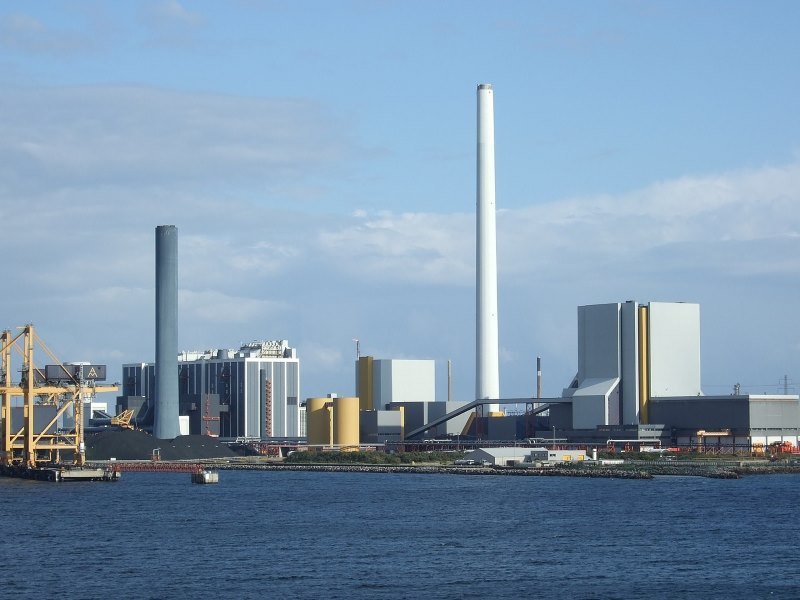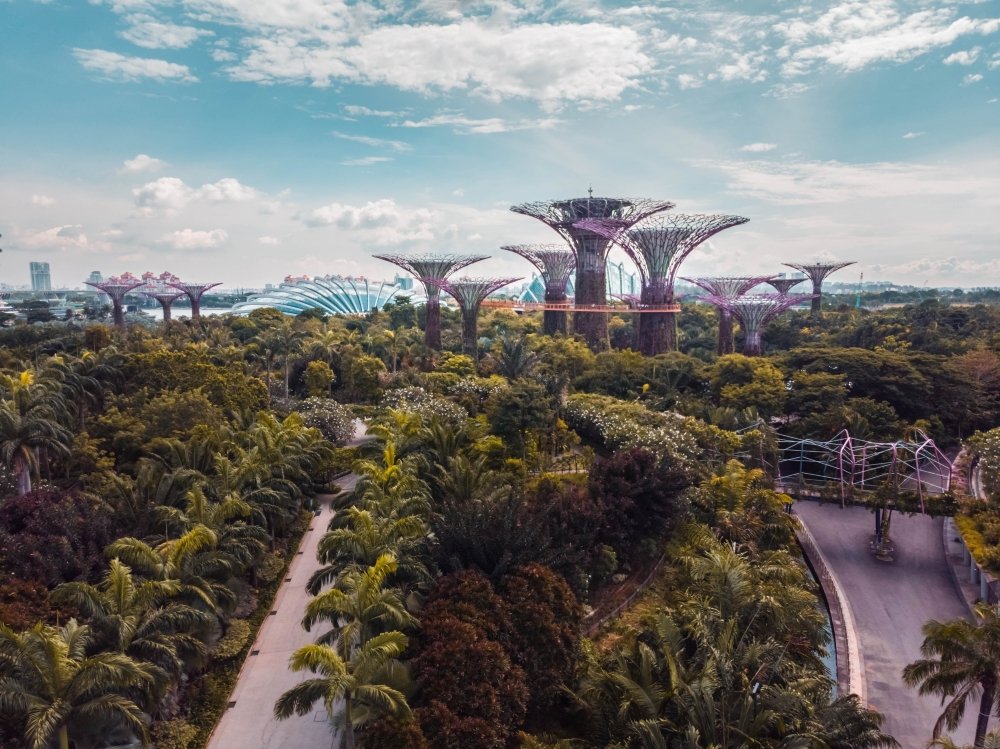Our natural world holds the secrets to enhanced urban planning and design. From the shape of birds’ beaks to the communication system of ants, learn how biomimicry can be leveraged to solve our impending urban challenges.
Nature’s forms, systems, and processes have undergone 3.8 billion years of adaptation and evolution to be the resilient and efficient versions we know today. Indeed, designers, engineers, and scientists have long looked to nature to solve urban challenges. This process is known as biomimicry. Biomimicry is about imitating the processes, functions and adaptations found in nature. It is not to be confused with biophilic design, which aims to incorporate natural elements (e.g. landscaping and water features) into the design of buildings and neighbourhoods. It is “not designing with nature, but designing as nature” (Bruck, 2017).
Biomimicry works on three levels—organism, behaviour, and ecosystem. At the organism level, it involves mimicking the form and function of an individual organism. This level of biomimicry is perhaps the most common in the scientific and engineering world.

The beak of the kingfisher inspired the design of Japan’s sharp-nosed bullet trains to reduce tunnel “booms” (Image: Creative Commons).
At the behaviour level, biomimicry focuses on how an organism responds to its physical environment or to one another. This is when its applications are a little more interesting. Smart building facades that respond passively to environmental stimuli have been modelled after plants’ natural reaction to light and moisture. Such innovations have the potential to reduce energy consumption and be more user-centric.
Biomimicry at the ecosystem level involves many components working together, such as the hydrological cycle and nutrient cycle of forests. It is best applied to urban systems and town development.
Innovating in Urban Planning and Design
City planning and urban design stand to gain from incorporating biomimicry concepts. At the micro design level, there are some notable architectural masterpieces that have been inspired by nature. Taking reference from termite mounds found in desert environments, the Eastgate Centre in Harare, Zimbabwe is designed with self-cooling properties. It incorporates numerous small windows to promote airflow and vertical ducts, which drive warm air out of the building and help keep the ambient temperature at a comfortable 27 °C during the day.

Termite mounds keep their internal temperature constant despite large surrounding fluctuations by way of small pores in the walls and the use of convection currents (Image: Creative Commons).

The Eastgate Centre (Image: Wikimedia Commons).
Similarly, the Council House 2 (CH2) in Melbourne regulates its temperature using water extracted and treated from sewers in the basement, which circulates to ceiling panels to cool the building. This is similar to how African Barossa termites dig tunnels into aquifers so the mound can lose heat through evaporative cooling. This method has helped CH2 use about 85% less energy than similar buildings without sustainability features.
Incorporating Traits of Natural Systems
At a larger scale, the city is often likened to an ecosystem. Both the natural world and the urban environment comprise multiple integrated systems that support a larger system. The only difference is that one has achieved equilibrium, while the other may be tipping over.
According to Dr Anuj Jain, co-founder of the Singapore Biomimicry Network, it is of great interest to urban planners to incorporate the cyclical and self-sustaining traits of natural systems into the design and development of towns and neighbourhoods. “Circular economy, at its very root, is biomimicry. It’s a concept we learned from nature—nature produces no waste”, Dr Jain explains.
Denmark’s Kalundborg Eco-Industrial Park is the world’s first example of industrial symbiosis. The site mimics the mutualistic relationship among different species in an ecosystem and adopts a circular approach to production in which the waste product of one company is used by others as raw material.

By sharing resources among the companies, which includes an oil refinery, wastewater treatment plant, biomedical manufacturer, and farm, Kalundborg achieved an overall lower water consumption and emission of carbon dioxide and nitrogen oxide (Image: public domain).
Singapore’s Jurong Island is similarly on its way to industrial symbiosis. Companies there are collaborating with JTC, with the support of other government agencies, to identify potential synergies to reduce resource use at the system level, resulting in overall environmental and economic gains.
Transport planning is another area with huge potential for biomimetic transformation. Vascular plants, animals and the human body contain energy-efficient, seamless and adaptive transport systems. Knowing how they work and replicating their functions will provide us with a new paradigm of moving people and goods across cities. When researchers from Hokkaido University placed food pieces in a similar pattern to cities surrounding Tokyo, a particular species of slime mould, the single-celled Physarum polycephalum, grew food tubes in a layout that closely resembled that of Tokyo’s rail network.
The self-organising behaviour of ant colonies, where individual ants communicate and collaborate to work towards a larger goal, has also inspired the development of a dashboard “virtual traffic light” system in which cars communicate with each other to determine the most efficient pattern of lights. This system, which replaces conventional traffic lights with Stop and Go signals that appear on one’s vehicle windscreen or dashboard, removes the need for physical infrastructure and can minimise congestion and improve vehicle flow rates by about 60% during peak periods.

A colony of ants working together is an example of self-organising behaviour in nature that has been the inspiration behind many new signalling and connectivity technologies (Image: Nicholas Lim).
Dealing With Emerging Urban Challenges
Applying ecosystem principles can also help planners design resilient cities. Nature is known to adapt to variations in the environment and recover from disruptions, allowing it to persist for a long time. Infrastructure should similarly be designed to be flexible enough to adjust to changing conditions. This includes looking to examples in the natural world, such as cacti spines and dragonfly wings, to design better building facades and damage-resistant building materials, according to Dr Jain. In the future, biomimicry could perhaps provide answers to issues such as climate change, resource optimisation, high-density living, and waste management.
Cities can also take a leaf from natural ecosystems in pursuing resource-efficient and long-term strategies to fight climate change. New inventions such as carbon-sequestering cement that mimics the way corals absorb carbon dioxide to build reefs can have a significant impact, given that cement manufacturing is responsible for approximately 8% of global carbon emissions.

Nature and natural infrastructure are critical for cities to strengthen their resilience against a broad range of challenges (Image: public domain).
Singapore can similarly leverage biomimicry to adapt to shifting climatic conditions and to contribute to maintaining the environmental equilibrium, said Assoc. Prof Ali Miserez, from Nanyang Technological University’s Laboratory for Biological and Biomimetic Materials.
Designs that respect local climatic conditions and native processes are likely to be efficient and resilient. Thus, our native ecosystems and habitats are the best reference material as they hold the secrets to long-term survival and stable interactions.
“Biomimicry is often about having the right organism that can teach you a useful lesson”, Assoc Prof Miserez said. “You just have to look at the geographical location of Singapore. Here, for instance, we’re surrounded by the sea. The Pacific and Indian oceans have a lot of organisms that can teach you interesting things, for example, about carbon capture”.
Biomimicry is a relatively new field and the research takes time. Retaining our remaining tracts of natural habitat not only acts as a buffer to the pressing problems of climate change and sustainability, but is also a buffer for ongoing scientific research. Our local biodiversity is still largely understudied, so safeguarding them for the future would benefit us all. Who knows when a newly discovered species or newly studied behaviour could spark the next big innovation for Singapore?
By Lim Li Fang
References
- Buck, N. T. (2017). The Art of Imitating Life: The Potential Contribution of Biomimicry in Shaping the Future of Our Cities. Environment and Planning B: Urban Analytics and City Science, 44(1): 120–40.
- JTC (2019). Optimising Resource Flows on Jurong Island. https://www.jtc.gov.sg/news-and-publications/featured-stories/Pages/Optimising-Resource-Flows-on-Jurong-Island.aspx (accessed 23 October 2019).
- Ng, P. K., Corlett, R., & Tan, H. T. (Eds.). (2011). Singapore Biodiversity: An Encyclopedia of the Natural Environment and Sustainable Development. Singapore: Editions Didier Millet.
- Sodhi, N. S., Koh, L. P., Brook, B. W., & Ng, P. K. (2004). Southeast Asian Biodiversity: An Impending Disaster. Trends in Ecology & Evolution, 19(12), 654–60.
- Tonguz, O. Z. (2011). Biologically Inspired Solutions to Fundamental Transportation Problems. IEEE Communications Magazine, 49(11), 106–15.
- Zari, M. P. (2007). Biomimetic Approaches to Architectural Design for Increased Sustainability. Paper presented at the Sustainable Building Conference, Auckland, New Zealand.
- Zari, M. P. (2015). Can Biomimicry be a Useful Tool for Design for Climate Change Adaptation and Mitigation? Biotechnologies and Biomimetic for Civil Engineering (pp. 81–113). Cham: Springer.
Source: https://www.ura.gov.sg/Corporate/Resources/Ideas-and-Trends/Learning-from-nature-to-design-better-cities



